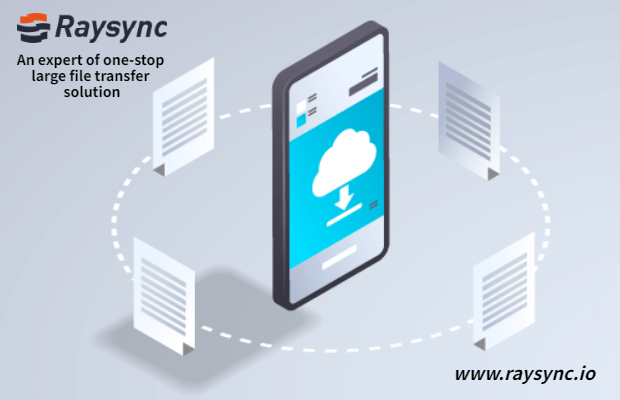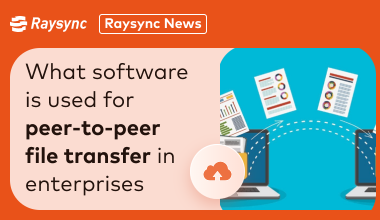Top 5 Tips for Large File Transfers in 2024
August 15, 2022Whether you are a small organization, a small to medium (SMB) business, or a business, it doesn't matter: at some point, you may need to exchange large file transfers with trading partners, third-party vendors, or customers. If you don't know how to support large file transfers or lack of tools to execute files correctly, then this may be a stressful event, but it is not necessary. Now prepare by tracking the tips, tricks, and solutions that make the transfer of large files a breeze.

5 Tips For Large File Transfer
We will help you get started. Here are five ways to simplify the transfer of large files:
1.Use file transfer solutions to ensure the delivery of large files
If you use scripts, local solutions, or open-source FTP tools to send and retrieve files, using these solutions to handle large file transfers will be a headache and impossible. Scripts, local solutions, and free tools are great for small temporary file transfers, but large file transfers usually require solutions with more details (ie, solutions with features that support heavy file transfer workloads).
The most secure file transfer solution on the market today supports automatic recovery and integrity checking of large file transfers. These features can reassure you that file transfers will not be interrupted by the network connection. On the contrary, they will pause and continue after the network problem is resolved. Even better, the file transfer process is checked at every step. Some solutions will even alert you when the file transfer is complete, or notify you when the file transfer fails, so if your trading partner does not receive the expected file delivery, you will not be caught off guard.
2. Set up high availability and scalability to support changing file transfer needs
If you have not set up for high availability or scale expansion in your organization, you may need to initiate sending and retrieval of large file transfers. High availability enables organizations to obtain maximum real-time time even in the event of system failures or network problems. If file transfers are being processed when the system fails, the HA environment will ensure that all file transfers are rerouted to the rest of the system, so that business requirements can maintain a 100% operational rate.
Scaling is also important. The scalable environment promotes load balancing. By adding multiple systems to the "cluster", file transfers will be evenly distributed across your network to avoid slowing down backup or processing time. The expansion also supports the growing business. By using scaling and load balancing, you can ensure that large file transfers (especially for enterprises) are of high quality, and files can be successfully delivered to locations that need to be executed successfully, regardless of the amount of file transfer you send.
3. Send large temporary file transfer via email
Suppose you only need to send large file transfers occasionally. You may not want to introduce a whole new process in your environment-but don't be afraid. It works like this: Employees draft emails using a secure email module or Outlook plug-in. Then, you can attach a file of any size and immediately encrypt it to protect the sensitive data it contains. After the mail is sent, the recipient will receive an email with a unique link to the package. This allows them to download messages and files via a secure HTTPS connection for fast and secure delivery.
For situations where security is particularly important, file transfers sent via secure email can be password protected (specify an expiration date), or a certain number of downloads can be allowed before the files are deleted.
4. Use secure collaboration tools to send large internal file transfers
For organizations that need to exchange large files securely with internal users but want to avoid the costs associated with mainstream file sharing products and lack of security controls, there are many options!
Secure folder-access, add and modify large files anytime, anywhere. The "secure folder" module allows employees to access files of any size at runtime. Using secure folders, organizations can create folders in the internal network, and authorized Web users can access these folders from almost anywhere. After adding a new file, the file will be quickly and securely transferred between the user's desktop and the organization's private network via a secure HTTPS connection.
As long as users have a browser and Internet connection, they can add files, modify current data, and collaborate on projects. Whether it is from a car, airplane, or the other half of the world!
5. Protect and automate regular large file transfers
When dealing with large file transfers, especially file transfers that need to be regularly sent to trading partners or other locations, it is best to use file transfer workflows to automate them. Workflow can simplify your process from start to finish, reassure you that modern encryption technology will be used to protect sent or retrieved files, and tracked through detailed audits and activity logs to reduce overall management time and deliver them successfully To the recipient.
Raysync high-speed large file transfer solution is dedicated to meeting the data transfer needs of enterprises or external partners, providing efficient and controllable accelerated transfer of large files, ultra-long distance, transnational network data transfer, safe distribution of file assets, file management, and organizational authority management. Supports local deployment and cloud services, and provides enterprises with safe, stable, efficient and convenient large file interactive technical support and services.
You might also like

Raysync News
May 27, 20225 File Transfer Services in 2022. The best large file transfer and file-sharing services for your business needs. Click here to learn more!

Raysync News
July 14, 2020The common ways individuals and organizations move data from point A to point B include email, FTP, HTTP, consumer file sharing applications, or even the physical delivery of a USB drive or paper files and documents.

Raysync News
April 3, 2024One issue with synchronizing file transmission is figuring out how to filter appropriate files. In synchronized file transmission, the filtering feature of Raysync Black & White List enhances intelligence and efficiency.